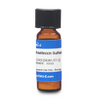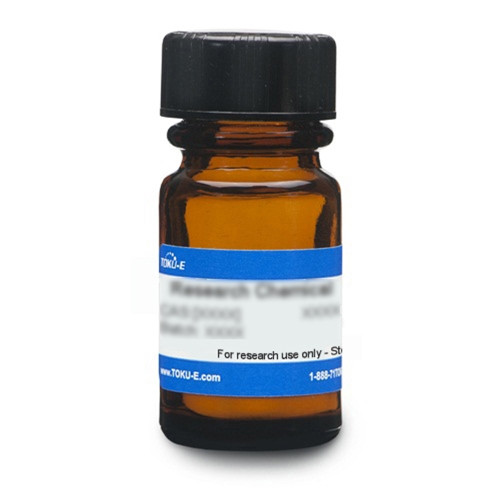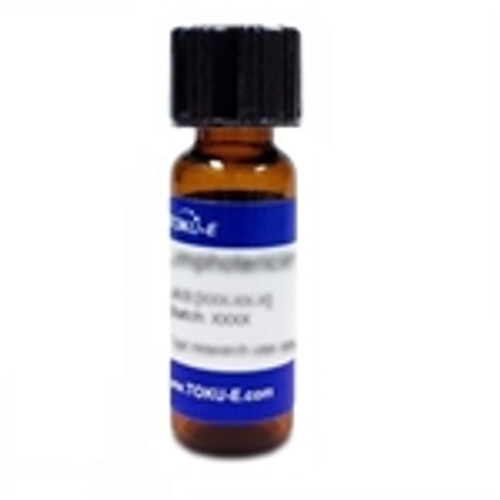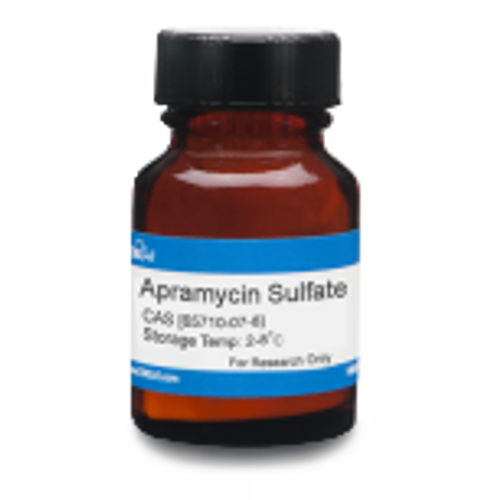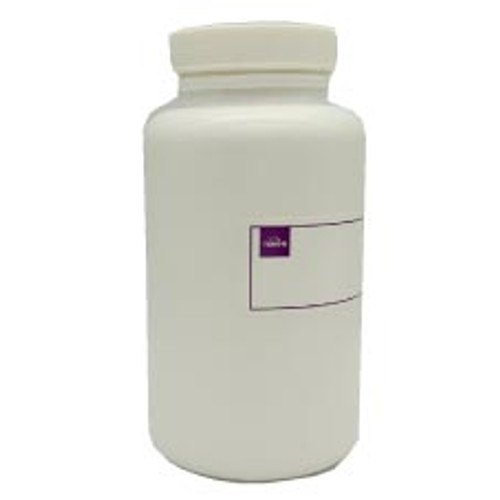Netilmicin Sulfate is the sulfate salt form of Netilmicin, a semisynthetic, broad-spectrum aminoglycoside antibiotic. It is a 1-N-ethyl derivative of the natural antibiotic sisomycin produced by fermentation of Micromonospora inyoensis that has a similar mechanism of action to Gentamicin. Netilmicin was patented in 1973 by Schering-Plough. It can be used as an analytical standard for antimicrobial susceptibility testing or in studying aminoglycoside resistance.
Netilmicin Sulfate is freely soluble in water.
| Mechanism of Action | Aminoglycosides target the 30S ribosomal subunit (specifically the 16S rRNA and S12 protein) resulting in an inability to read mRNA ultimately producing a faulty or nonexistent protein. Netilmicin also induces misreading of the mRNA template resulting in premature termination, eventually leading to death of the bacterial cells. |
| Spectrum | Netilmicin Sulfate can be used against Gram-negative and some Gram-positive bacteria including some Gentamicin-resistant strains. Aminoglycosides are not active against anaerobic organisms. |
| Microbiology Applications | Netilmicin Sulfate is commonly used in clinical in vitro microbiological antimicrobial susceptibility tests (panels, discs, and MIC strips) against Gram-positive and Gram-negative microbial isolates. Medical microbiologists use AST results to recommend antibiotic treatment options. Representative MIC values include:
For a representative list of Netilmicin MIC values, click here. |
| Eukaryotic Cell Culture Applications | Netilmicin Sulfate inhibited rat erythrocyte 6-phosphogluconate dehydrogenase (PGD) in vitro, with an IC50 of 0.963 mM (Cifci et al, 2002).
Netilmicin was applied in vitro to human corneal epithelial cells (HCE-T) and human conjunctival epithelial cells at 0.08-5.0 mg/mL for 4 or 24 hours and cell proliferation and viability were assessed with the MTT assay, neutral red uptake, and bromo deoxy uridine incorporation. Researchers found Netilmicin did not induce any cell toxicity (Papa et al, 2004). Netilmicin was investigated for its interaction with melanin and how this process affects collagen biosynthesis in cultured human skin fibroblasts. It was found to form stable complexes with melanin. Additionally, it was found to strongly inhibit prolidase activity, which is an enzyme involved in collagen metabolism, and enzyme activity was inhibited by 80% when applied at 10 µM. When Melanin (100 µg/ml) was applied to netilmicin-treated cells, it restored the enzyme activity. The ability of Netilmicin to form stable complexes with melanin may prevent its toxicity on prolidase activity and collagen biosynthesis (Buszman et al, 2006). |
| Molecular Formula | C21H41N5O7 •2.5 H2SO4 |
| Impurity Profile | Residue on Ignition: ≤1.0% Heavy Metals: ≤20ppm |
| References |
Adams E, Puelings D, Rafiee M, Roets E, Hoogmartens J (1998) Determination of Netilmicin Sulfate by liquid chromatography with pulsed electrochemical detection. . J Chromatogr A. 812(1-2):151-157 PMID 9691316 Buszman E et al (2006) Effect of melanin on Netilmicin-induced inhibition of collagen biosynthesis in human skin fibroblasts. Bioorg. & Medicin. Chem. 14(24):8155-8161 Campoli-Richards DM, Chaplin S, Sayce RH, Goa KL (1989) Netilmicin. A review of its antibacterial activity, pharmacokinetic properties and therapeutic use. Drugs. 38(5):703-756 PMID 268913 Ciftçi M, Beydemir S, Yilmaz H, Bakan E (2002) Effects of some drugs on rat erythrocyte 6-phosphogluconate dehydrogenase: an in vitro and in vivo study. Pol J Pharmacol. 54(3):275-280 PMID 12398160 Davis, BD (1987) Mechanism of bactericidal action of aminoglycosides. Microbiol. Rev. 51(3): 341-350 Papa V et al (2004) Effect of Ofloxacin and Netilmicin on human corneal and conjunctival cells in vitro. J. Ocular Pharmacol. and Thera. 19(6):535-545 PMID 14733711 |
| MIC | Candida albicans| 1.25 - 125|| Enterobacter cloacae| 8 - 31.25|| Enterobacteriaceae| 0.03 - 128|| Enterococcus faecalis| ≥2.5|| Escherichia coli| 0.01 - 10|| Fusarium oxysporum| ≥62.5|| Fusarium solani| ≥125|| Haemophilus spp.| 0.12 - 16|| Klebsiella pneumonia| 0.01 - 10|| Listeria monocytogenes| ≥2.5|| Microsporum canis| ≥31.25|| Monilinia fructicola| ≥31.25|| Mortierella alpina| ≥62.5|| Neisseria spp.| 0.5 - 16|| Penicillum spp.| ≥62.5|| Pseudomonas aeruginosa| 0.01 - 125|| Pseudomonas morgani | ≥0.01|| Pseudomonas pseudoalcaligenes| ≥125|| Pseudomonas spp.| 0.06 - 128|| Rhizoctonia solani| ≥15.62|| Rhizopus spp.| ≥125|| Richophyton rubrum| ≥15.62|| Salmonella anatum (food isolate)| ≥5|| Salmonella cholerasuis arizonae (F7)| ≥250|| Salmonella enteritidis (food isolate)| ≥3.5|| Serratia plymuthica (F8)| ≥125 || Shigella sonnei (F9)| ≥31.25|| Staphylococci| 0.008 - 128|| Staphylococcus aureus| 0.008 - 8|| Staphylococcus epidermidis| ≥4|| Stenotrophomonas maltophilia| 0.5 - 64|| |


